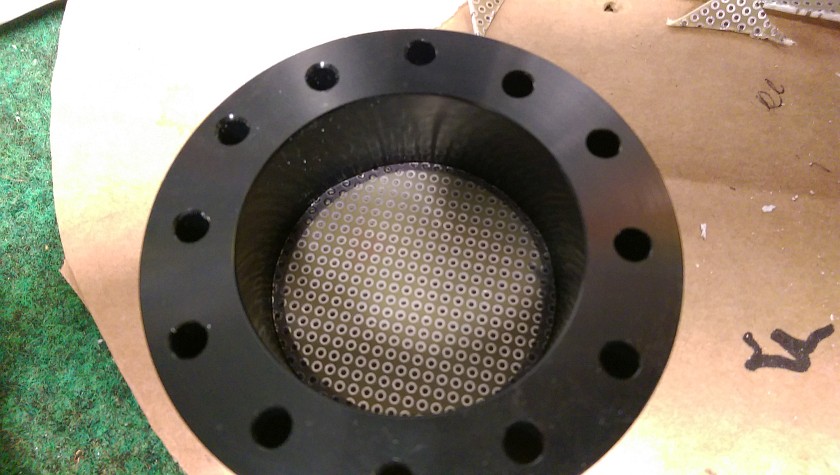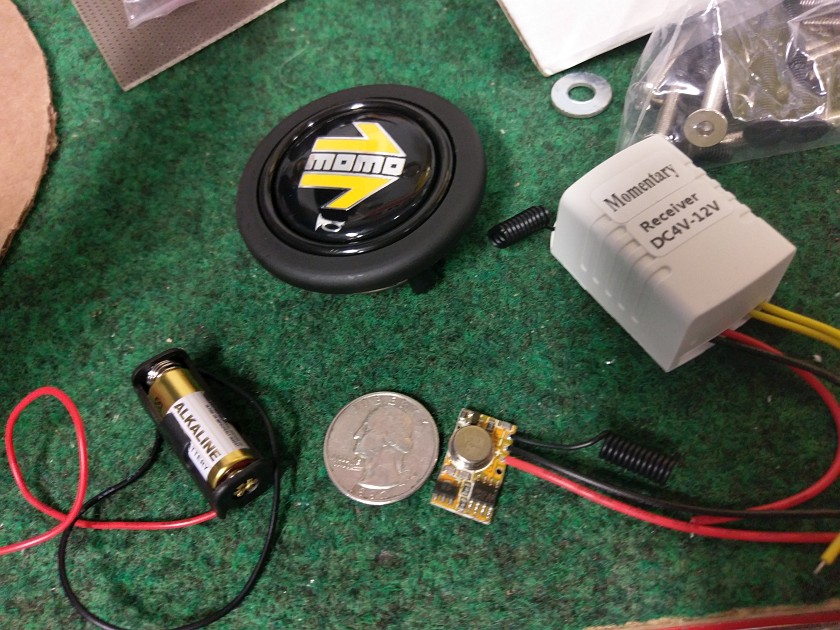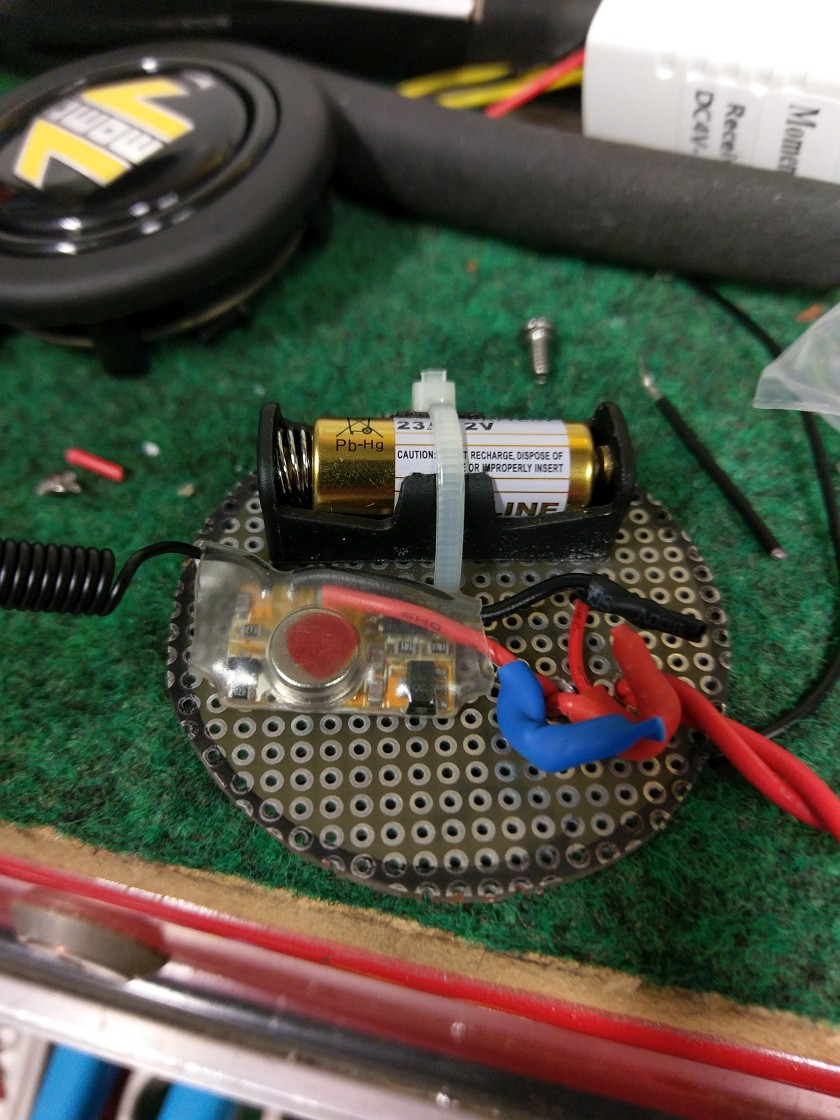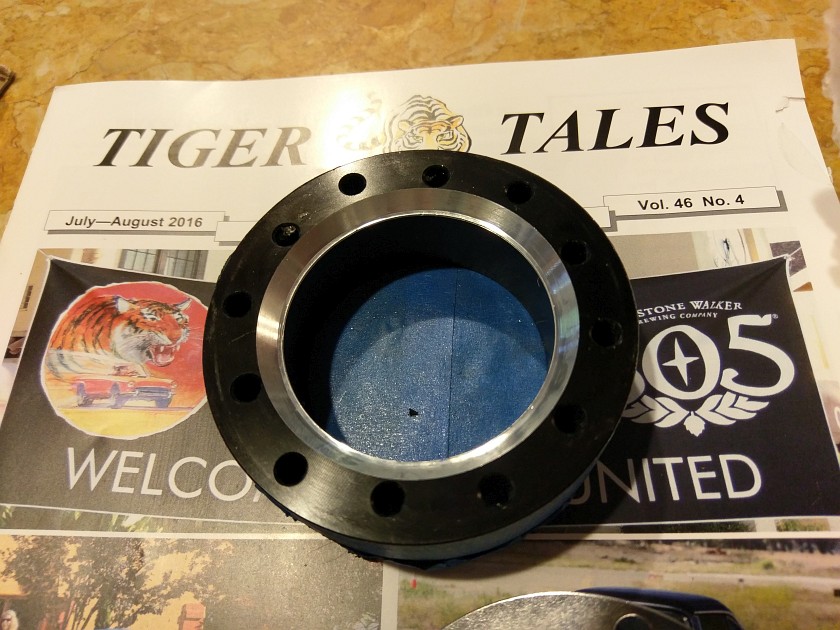Wireless Horn Button
While working on the Sunbeam Tiger I decided to swap out the steering column. Then I realized that the racing
column from Sweet Mfg had no provisions to do a horn wire. No fault of theirs it's a racing column. To make
matters worse it uses a Quick Release adapter to the steering wheel.
Options are make a coiled cord assembly and disconnect harness, use the high beam flasher on the turn stalk to
trigger the horn, or think of something out of the box.
Well in my modification of the Turn Signal stalk for the Sweet column I had to cut off the high beam flasher part of
the switch. That would have been so easy to do, and just would have been connecting up one simple wire.
Enter the CrAzY idea I had, how about a wireless transmitter stuffed into the steering wheel?
The Good : I can have a horn button in the right location and a quick disconnect steering wheel hub without any
wires.
The Bad : SEE CAUTION BELOW, It will have a battery and related electronics, it requires a 1" steering spacer,
and I have to make it.
CAUTION : DO THIS PROJECT AT YOUR OWN RISK. THIS CAN BE A DANGEROUS
PROJECT IN THAT THE BATTERY CAN FAIL AND YOUR HORN WILL NOT WORK
WITHOUT WARNING. THIS IS FOR OFF ROAD USE ONLY.




